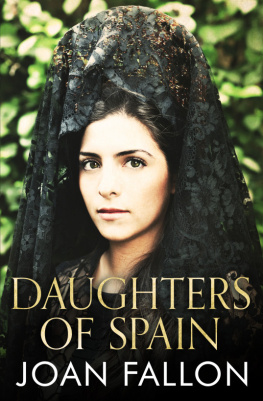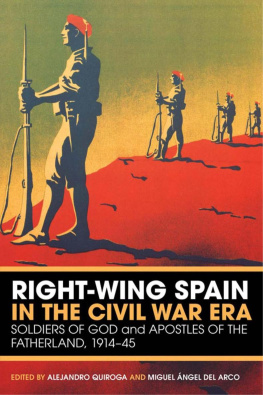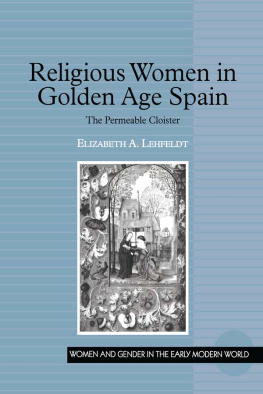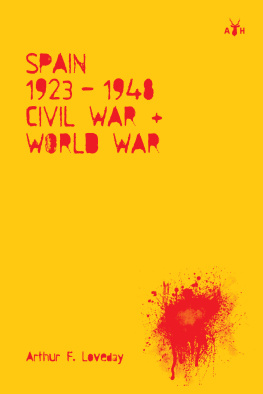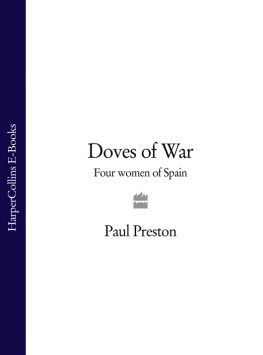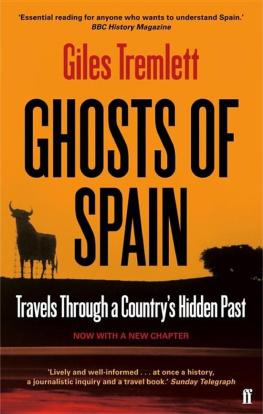DAUGHTERS OF SPAIN
An oralhistory:
snapshotsof Spanish life through the recollections, hopes and thoughts ofthe women of Spain.
Joan Fallon
Published by Joan Fallon atSmashwords
Copyright 2014 JoanFallon
ISBN978-0-9929109-1-4
Smashwords Edition, License Notes
This ebook is licensed for your personal enjoyment only. Itmay not be re-sold or given away. If you are reading this book anddid not purchase it, or it was not purchased for your use only,then please return it to Smashwords.com and purchase your own copy.Thank you for respecting the hard work of this author.
Firstpublished in 2009 by Vanguard Press
DAUGHTERS OF SPAIN
Thisbook is dedicated to all the women who gave so unsparingly of theirtime to talk to me about their past, their present and theirfuture
Introduction
Thisbook attempts to give the reader a flavour of what life was likefor Spanish women during the last seventy years, from the beginningof the Civil War until the present day, from a totalitariandictatorship to a socialist democracy. Through a series ofconversations with women of all ages, we learn of theiraspirations, fears and disappointments, their joys and theirsuccesses. Together they create a mosaic of the lives of mothers,daughters and grandmothers.
At thebeginning of the twentieth century women in Spain lived closelyregulated and restrictive lives, far similar to the lives of Muslimwomen than their northern European counterparts; according toLaurie Lee when he visited southern Spain as a young man in the1930s, some women even veiled their faces. Women had noindependence and were totally under the control of either theirfathers or their husbands; they could be given away in arrangedmarriages and were never allowed out without chaperones. They wereforbidden to have their own bank accounts or property, even whenthey were married. If they wanted a passport they had to have thepermission of their father or husband.
Life forworking-class women was even worse; those that worked on the landworked from sunrise to sunset then had to go home to cook, cleanand care for their children. Even when they did the same work asmen they were only paid half the wages that the men received, oneand a half pesetas a day; it was womens wages whether it waswomens work or mens.
The Second Republic
TheSecond Republic, which was in power from 1931 to 1936, introducedsome limited reforms which benefitted women. In the 1931Constitution women were awarded the vote and given full legalstatus within the state. Then the government passed a number oflaws on divorce and civil marriage; adultery became no longer acrime and abortion was legalised. Women were allowed free access tothe labour market and some limited maternity leave, and the lengthof the working day was reduced to eight hours, leaving women withmore time to work in the home.
Thefirst changes began with the collectives that were formed duringthe Second Republic, where women worked alongside men and for thefirst time found they had equal rights. In many collectives theywere paid the same money as the men but even then most were paid afamily wage, which was given directly to the head of the family,the husband. The collectives had sprung up in the northern part ofSpain as a result of many years of anarchist propaganda in thecountryside. By mutual agreement many groups of peasants with theirown smallholdings agreed to work together and share the profits oftheir labour. By 1936 these communes, or collectives as they werelocally known, were more structured and each village had an electedmanagement committee that was responsible for the economicadministration of the commune. Work was obligatory for all menbetween the ages of eighteen and sixty; they were formed intogroups of ten or so and given specific areas to farm or jobs to do.The workers reported back to the committee on the progress that wasbeing made and they were given a producers card on which theyrecorded the hours they had worked. These hours worked wereconverted into a number of units to be used as a means of exchangeto obtain goods from the communal shops. Everything other thanpersonal family items, such as clothing and furniture, was put intoa communal pool to be shared according to a familys needs, whileother necessities such as electricity, rent, medical care,education and pharmaceuticals were free. Non-workers such as thesick and the elderly received a consumers card so that they toocould receive a share of the produce. Even artisans such ashairdressers, cobblers and bakers formed themselves intocollectives. Schools were set up in abandoned convents and allchildren had to attend until the age of fourteen; they were notallowed to work before then. It was in these collectives that womenfirst realised that they could have a say in what was happeningaround them, although even there they were still not always assuredof an equal vote with the men.
ADELE born in Mlaga in 1959
Adele was born in Mlaga in 1959 andhas lived in and around the village of Benajarafe Alto all herlife. She is 49 years old, married and has two grown-up children.She works as a cleaner for some the foreign residents who livenearby.
Adelearrived one afternoon on her moped; she had finished work for theday and had managed to find me a couple of hours before she beganto prepare the evening meal for her husband and two children. Shelived in a small hamlet called Los Nezas and worked as a cleaner inthe houses of nearby residents, most of whom were foreigners,Danish or English.
My mother was born in 1919 in Los Puertas, a small villageabout five kilometres from here, she began.
I knewthe village she meant; it was a group of white painted houses thatnestled on the side of a hill, sheltered from both the cold, northwind in winter and the heat of the afternoon sun insummer.
She had three sisters and a brother; quite a small family inthose days. My grandfather owned a bakery and every week he wouldgo with his donkey to the nearby town, Almayate, to buy flour andmy grandmother made the dough at night ready to cook first thing inthe morning. They also had a small market garden and grew lots ofproduce: beans, tomatoes, peas and peppers. They sold bread andgoats cheese, which my grandmother also made. A lot of the cropsdid not need watering, such as the beans and the peas, but it wasmy mothers job to water the tomatoes and peppers and when she wasvery small she and her brother and sisters took it in turn to helpwith the noria , awaterwheel that pumped the water up into our well. It was poweredby the donkey, which walked round and round in a circle until thewell was full. One of the children had to sit there until there wasenough water and then untie the donkey otherwise he would just keepon walking forever. From a very young age my mother had to helpwith everything, in the huerta , the vegetable garden, in thehouse and in the bakery.
She and her sister began to work on the fincas, or local farms, when theywere twelve years old and they were paid by the day. They workedduring the harvests, picking tomatoes, olives, almonds, whateverwas in season. There were no invernaderos , greenhouses, then;everything was grown in its season. The pickers went out in teamsof four or five with one of them acting as the leader. They workedin the fields all year round and in summer it was hard, hot work.They worked de sol asol , from sunrise to sunset and then theystill had to help at home, working in the bakery or the house. Evenafter she was married my mother continued working as a picker onthe farms.
One ofmy mothers sisters, my aunt Loli, moved to Madrid when she marriedbecause she had a child with asthma and the doctor recommended thatshe move away from the sea. Another sister, my aunt Maria, moved toBadajoz, where her husband had an uncle with a hire-purchasebusiness. It was a shop which sold everything from furniture toclothes and people bought what they needed and paid bit by bit. Sohe and my aunt worked there. The third sister remained fairly closeto home, in Almayate and my mothers brother left home at an earlyage and went to Algeciras to be a fisherman. He was a ratherrebellious young man and didnt keep in touch with the family untilhe was an old man, then he went to live with one of his sisters; henever married.
Next page
